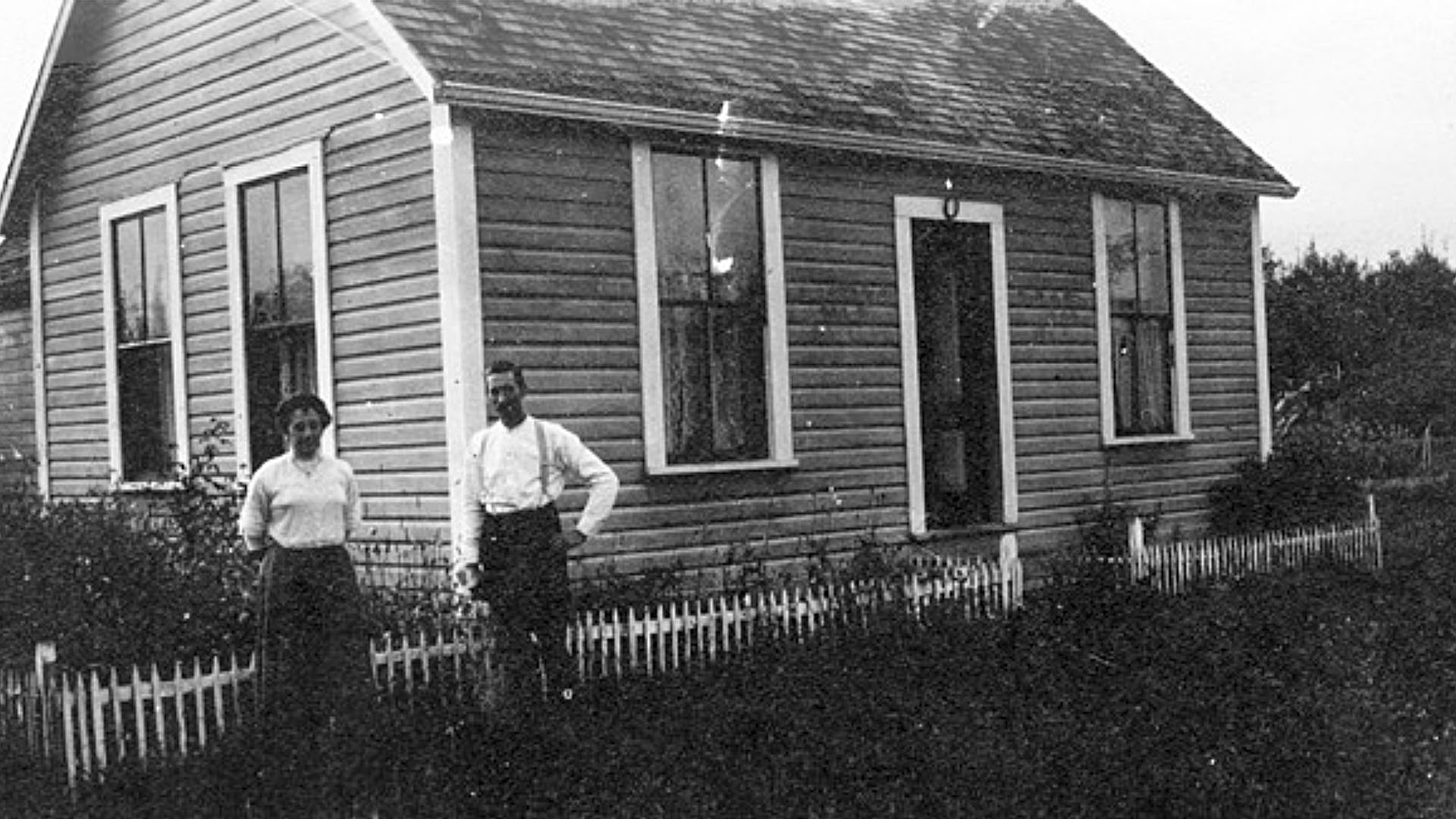
The Parry-Evans Residence
The Restoration of a Historic Community Landmark
The Parry-Evans Residence is a 1.5-storey, wood-frame cottage on 208th Street in Langley's historic Willoughby neighbourhood. Built in 1896, it features simple architecture with a side-gabled roof, symmetrical windows, a pre-1907 gabled rear addition, and a 1921 shed-roofed verandah.
Ralph and Myrtle McKenna in front of the Parry-Evans house, 1940s.
Myrtle Parry-Evans on the verandah of the Parry-Evans house in 1922.
The Parry-Evans Residence represents the simple, practical structures built by Langley's early European settlers as they cleared land and established farms. Made from locally available materials, the house reflects a functional approach to shelter that could be expanded for growing families. Typical of early Willoughby architecture, it was built for necessity. Thomas Bird Parry-Evans acquired the 160-acre site in 1895, built a shack and barn, and in 1896, with the help of a Surrey builder, constructed the first part of the house. It housed three generations of the family until 2004.
Martin family on Parry-Evans farm, 1907; detail of Parry-Evans house in background.
Conservation Strategy
The house has been relocated to the northeast corner of the existing site adjacent to a greenway. As a single-family residence, the home will remain consistent with it’s historic use and continue to be a landmark in the community.
Parry-Evans Residence: "House before porch was put on before 1920."
The Parks Canada Standards and Guidelines for the Conservation of Historic Places in Canada were used to evaluate the conservation work at the property. Conservation aims to protect the heritage features of a place while preserving its value and character, involving Preservation, Restoration, or Rehabilitation.
The proposed work on the Parry-Evans Residence includes:
Preservation: Maintaining and stabilizing existing materials and structure while protecting heritage value.
Restoration: Accurately restoring a historic place to its appearance during a specific period.
Rehabilitation: Adapting a historic place for contemporary use while preserving its heritage value.





